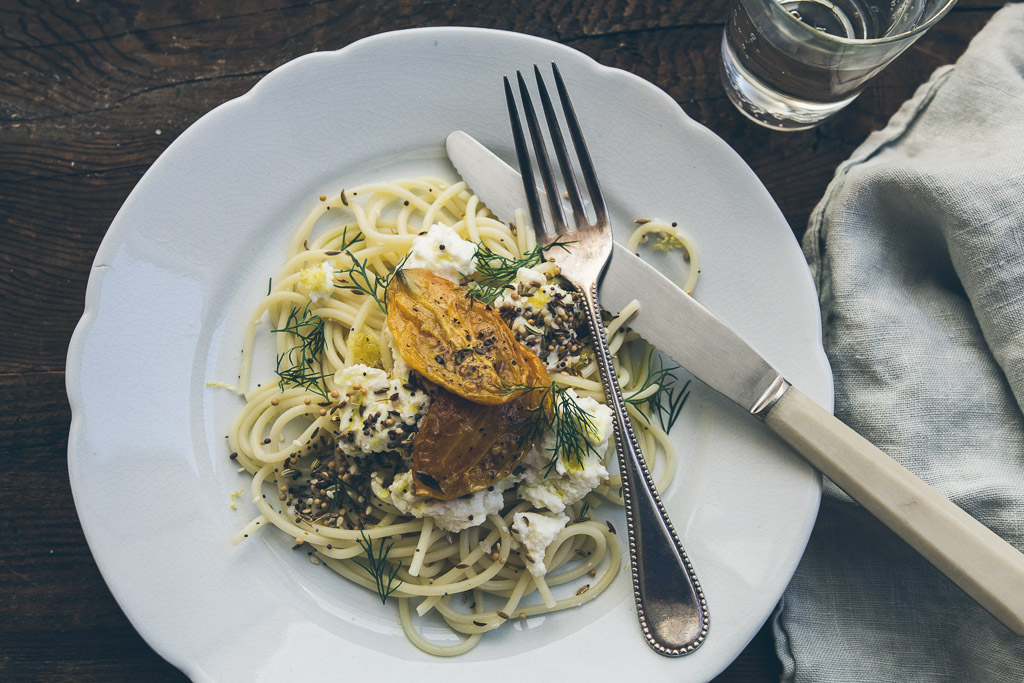One of my many “charming” idiosyncrasies is that I often intensely dislike the things I come to adore.
Take my best friend, Sarah, for example. I met Sarah in the 7th grade. She was part of a clique of impossibly cool and intimidating girls who wore peppy Keds sneakers and adorned their shiny ponytails with ribbons with their names on them.
They were everything I wanted to be: pretty, popular, rich--by the humble standards of my family, anyway. And so, I decided that I would hate them with every fiber of my awkward, middle-school self and wish for their social downfall.
Whether my adolescent ill-will had any effect on the fate of this formidable clique, I cannot say. But I do know that shortly after I vowed to despise them, something magical happened: Sarah was booted from their ranks.
There was a shift in the 7th-grade hierarchy of power, and somehow Sarah didn’t make the cut. But one girl’s loss is another’s gain, and at a boozily unchaperoned party later that year, I discovered that Sarah was supposed to be my BFF for all time and claimed her as my own.
She has remained my very best and most steadfast friend since that fateful eve. She is one of the few people I, introverted hermit that I am, pick up the phone for. We make each other laugh until we cry at least once a week. Last year, she officiated at my wedding. She knows me like no one else and I can’t imagine a world without her.
Tomatoes and I have a similar story.
As a kid I hated tomatoes with a vehemence that bordered on insanity. My mother and grandmother were always trying to sneak them into a ham sandwich or an iceberg lettuce salad. But no amount of Hidden Valley Ranch dressing could disguise my sworn enemy. The tomatoes I grew up eating were of the 1980’s industrially-farmed variety, shipped from the far corners of the country to the Midwest and refrigerated until mealy and almost completely lacking in flavor. They were pale and lifeless and in no way represented something I was going to stick in my mouth.
This was pretty much the status quo until I moved to Brussels after college. It was there, at my local farmers market, that I discovered heirloom tomatoes so beautifully ripe and fragrant that I was lured into giving them a try. I recently found a picture of those tomatoes: a pile of Green Zebras and Belgium Pinks and Sungolds. The experience was apparently so transformative, I decided to memorialize it for all time.
I have since come to love tomatoes of many stripes and colors. Our kitchen table has a bowl that remains full of some sort of tomato from late June through September. In Seattle, we are spoiled with a stunning variety to choose from. I was rounding a corner at the farmers market last Sunday when a pile of pristine yellow romas from Growing Things Farm caught my eye. I backtracked and scooped up every last one. I knew exactly what I was going to do with them; beautiful, ripe romas are perfect for slow-roasted tomatoes. And slow-roasted tomatoes are perfect on just about everything.
Gently-roasted in a low oven, tomatoes become meltingly tender and sweet. Their flavors are intensified as water evaporates and their sugars start to caramelize. Once roasted, their uses are almost endless. You can bake them into a fluffy frittata, pile them onto a slab of crusty bread with avocado or mozzarella, whiz them into a vinaigrette or toss them with white beans, fresh herbs and a drizzle of good olive oil for a hearty summer salad. You get the drift.
After I roasted those golden beauties, I decided they wanted something creamy to balance their acidity and something earthy to ground their intense sweetness. This pasta was the result. There is velvety fresh ricotta and a hit of lemon zest for brightness. And the whole thing is topped with toasted seeds for crunch and a handful of dill that lends freshness, complexity and verve.
But the tomatoes are what bring it all together. I guess this dish is an ode of sorts to a former foe. I’m going to have it for dinner again tonight, I think, and ponder my good luck at having made such dear friends of erstwhile enemies.
Slow-Roasted Tomato Pasta with Lemon, Ricotta and Seeds
- 10 oz. (285g) spaghetti or other long, thin pasta
- 1 tablespoon sesame seeds
- 1 tablespoon cumin seeds
- 1 tablespoon yellow mustard seeds
- 1 1/2 teaspoons black mustard seeds
- 1 1/2 teaspoons fennel seeds
- 1 1/2 teaspoons poppy seeds
- 2 teaspoons finely-grated zest (approximate yield of 1 large lemon)
- 2 teaspoons freshly-squeezed lemon juice
- 12 slow-roasted tomato halves (see recipe below)
- 1 cup (about 8 oz or 225g) fresh whole-milk ricotta (preferably close to room temperature)
- Salt and freshly-ground black pepper
- 1 tablespoon dill fronds, to garnish (optional)
*Notes: Homemade ricotta is easy to make and so much better than store-bought! Here's a recipe in case you want to give it a go. If not, I think Bellwether Farms and Belgioso both make great ricotta.
- I know dill is a divisive herb; some people love it, some hate it. But used in moderation, it cuts through heavier flavors to freshen a dish and provide a faintly sweet and sour complexity. And dill with tomatoes can be a beautiful thing. I encourage you to try it. But no hard feelings if you’re not feeling it--just leave it off or substitute it’s much milder counterpart: fennel fronds. A few finely snipped chives would be nice, too.
- Leftover toasted seeds are delicious sprinkled on a green salad, a rice bowl, hard-boiled eggs or a simple slice of avocado toast. They will keep, stored in an airtight container for at least a month before they lose some of their zing.
Bring a pot of generously salted water to the boil. Add the pasta and cook until al dente.
While the pasta is cooking, toast the seeds. Heat a medium sauté pan over medium heat. Add the sesame seeds and toast, stirring often, until fragrant and golden, 3-4 minutes. Transfer to a plate to cool. Add all the rest of the seeds to the skillet and toast, stirring often, until fragrant, 2-3 minutes longer. Transfer to the plate with the sesame seeds. Stir to combine.
When the pasta is done, use a heatproof measuring cup to remove about ½ cup of the pasta cooking water. Set aside. Drain the pasta and return it to the pot. Add the lemon juice and zest.
You can mix the pasta with the other ingredients before serving or you can layer the ingredients as you plate the dish, as I did in these photos, which looks a bit fancier. If I’m not photographing this dish or serving it to guests, I mix everything together, which I think distributes the flavors a bit more evenly.
To mix the ingredients: roughly chop the tomato halves and add them to the pot with the warm pasta along with the ricotta and a generous pinch of salt and a few grinds of black pepper. Add 2 tablespoons of the reserved pasta water. This helps the ricotta coat the pasta better. Stir to coat the pasta. If the ricotta seems too thick or clumpy, add another tablespoon or two of the pasta water and stir again. Transfer to a serving platter or individual plates and sprinkle with some of the mixed toasted seeds and a few dill fronds. Drizzle with a bit of the oil from the tomatoes if desired and serve.
To layer the ingredients: divide the pasta (seasoned with zest and juice) between 4 plates. Top each plate with ¼ cup of the ricotta. Arrange 3 tomato halves on top of the ricotta. Sprinkle each plate with a pinch of salt and a few grinds of black pepper. Sprinkle with some of the mixed toasted seeds and a few dill fronds and serve.
Makes 4 servings.
Slow-Roasted Tomatoes
1 lb plum tomatoes, halved lengthwise (you can use cherry or grape tomatoes, too)
1/3 cup extra virgin olive oil, for drizzling and storing
Kosher salt or coarse sea salt
Freshly-ground black pepper
Few sprigs fresh thyme
Preheat the oven to 300°F (150°C) Position a rack in the center of the oven.
Place the halved tomatoes, cut-side-up on a rimmed sheet pan. Drizzle with the olive oil. Sprinkle with salt and pepper. Scatter the thyme sprigs over the tomatoes and transfer to the oven.
Roast until the tomatoes have lost at least half of their moisture, and are starting to caramelize slightly. The time will vary depending on the size of your tomatoes. This will take anywhere from 45-50 minutes for tiny cherry tomatoes, to 2 hours for large, juicy plum tomatoes.
Remove the sheet pan from the oven and allow the tomatoes to cool to room temperature before storing. To store, transfer the roasted tomatoes to a clean jar and pour the oil from the sheet pan over the tomatoes. You can pour in a little more oil if you like. The tomatoes don't need to be covered, but they will season the oil which you can then drizzle over them or use to season vinaigrettes, fish or roasted vegetables. Cover and store in the refrigerator for up to a week.









